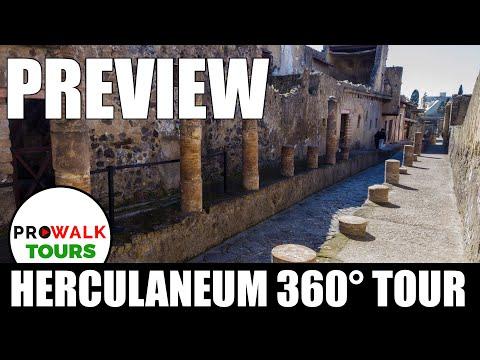As I walked through the ancient streets of Herculaneum, a place steeped in both history and mystery, I could almost feel the echoes of the past reverberating around me. The remnants of the city, preserved under layers of volcanic ash and pumice from the eruption of Mount Vesuvius in 79 AD, seemed to come alive with each step I took. My journey had started with a simple curiosity, a desire to delve into the world of the past, but it had quickly transformed into something much deeper, an exploration of a civilization frozen in time.
The initial excitement of the discovery was palpable as I entered the site. The air was thick with the aroma of earth and stone, and the silence was occasionally broken by the distant hum of other visitors. I wandered through the narrow streets, each corner offering a new glimpse into the everyday lives of the inhabitants of this ancient city. It was as if I had stepped into a time capsule, and the grandeur of the past was all around me. The walls, although scarred and weathered, still bore vibrant frescoes that depicted scenes of daily life, mythology, and nature, providing an ultimate window into the aesthetics and values of the time.
One of the most striking features of Herculaneum was its well-preserved houses. Unlike Pompeii, which had suffered more extensive damage, Herculaneum’s buildings had retained much of their original structure. The luxurious villas with their elaborate mosaics and intricate marble floors spoke volumes about the affluence of the city’s elite. As I wandered through these grand residences, I could almost imagine the bustling activity that once filled these spaces: the lively conversations, the clinking of goblets, and the soft murmur of music.
In one particularly well-preserved villa, I stumbled upon an open courtyard with a fountain still standing in the center. The water had long since dried up, but the elegance of the design remained intact. The frescoes on the surrounding walls depicted scenes of nature, with birds and flowers in vibrant colors, a testament to the artistic skills of the time. Standing there, I felt an overwhelming sense of connection to the people who had once lived in this space. Their lives, so distant in time, suddenly felt so close.
The bathhouses of Herculaneum were another highlight of my visit. These public spaces, where the residents would have gathered to relax and socialize, were incredibly detailed. The intricate mosaics on the floors, the remains of the heating systems, and the elaborate decorations all painted a picture of the importance of these communal facilities. As I walked through the steamy rooms, I could almost hear the echoes of conversations and laughter that might have once filled the air.
One of the most poignant moments of my visit came when I found myself in the area of the city that had been designated for commercial activities. The remains of shops and workshops were scattered across the area, offering a glimpse into the bustling marketplace that had once thrived there. The walls of the shops bore advertisements and signs, showcasing the variety of goods and services available to the residents. It was a fascinating reminder of the daily commerce that drove the city’s economy and a vivid illustration of the human side of ancient trade.
Exploring the residential areas further, I encountered a series of intricate wall paintings in a small house that seemed to belong to a less affluent family. The artwork was more modest but still captivating, depicting scenes from mythology and everyday life. It was a stark contrast to the opulence of the elite homes but equally revealing of the city’s rich cultural tapestry.
The highlight of my journey was an encounter with an archaeologist who was working on-site. I had the opportunity to ask questions and learn more about the ongoing excavation efforts. The archaeologist spoke passionately about the challenges and triumphs of uncovering and preserving the city. It was clear that the work being done was not just about unearthing artifacts but about piecing together the story of a civilization that had been lost for centuries. Their dedication to this ultimate goal of historical preservation and understanding was truly inspiring.
As my visit drew to a close, I took a moment to reflect on the experience. Herculaneum, with its well-preserved streets, homes, and artifacts, had provided me with a profound connection to the past. The city was not just a historical site; it was a living, breathing testament to the lives of those who had walked these streets so many years ago. The eruption of Vesuvius had buried their world, but in doing so, it had also preserved it, allowing us to explore and appreciate the richness of their lives. My journey through Herculaneum had been more than just a tour of ancient ruins; it had been an ultimate exploration of history, culture, and human connection.
